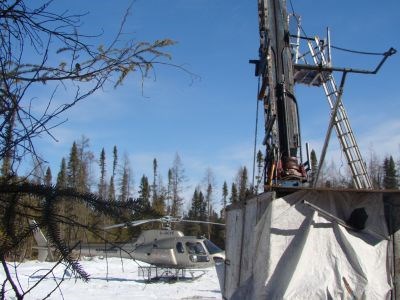Zenyatta Ventures is reporting it’s produced high-purity and highly crystalline graphite from its Albany Graphite deposit near Hearst. It has now sent samples to potential customers for further testing.
Zenyatta owns one of the largest known hydrothermal graphite deposits in the world. Hydrothermal graphite is the purest, but also the rarest, form of graphite, which is used in vehicle components, stainless steel production, as well as lithium-ion batteries, smart phones, laptops, electric vehicle batteries and fuel cells. It’s also needed for nuclear reactors.
Metallurgical testing on material from the Zenyatta deposit confirmed earlier bench-scale testing and produced a concentrate that has been upgraded at laboratory scale to a high purity and highly crystalline graphite product using a caustic bake-based process.
The more pure and crystalline graphite is the more valuable it is, as higher crystallinity results in better electrochemical behaviour.
“The pilot plant has proven to be very useful in the early evaluation and troubleshooting for the flow sheet design,” said Peter Wood, Zenyatta’s vice-president of exploration, in a news release. “The test work will continue and provide the necessary engineering data for energy requirements, water treatment, reagent consumption and equipment sizing. We expect to develop a distinctive process for this unique graphite deposit.”
The results of additional testing will inform the preliminary economic assessment (PEA), which is to be completed in the fourth quarter of 2014.
It will include information on open pit mining methods, metallurgy and processing, infrastructure, environment, manpower requirements, marketing and price assumptions, capital and operating costs, a life of mine plan, and an execution plan.
The deposit’s indicated mineral resources total 25.1 million tonnes at an average grade of 3.89 per cent graphitic carbon, containing 977,000 tonnes of graphitic carbon. Inferred mineral resources are estimated to total 20.1 million tonnes at an average grade of 2.20 per cent graphitic carbon, containing 441,000 tonnes of graphitic carbon.




